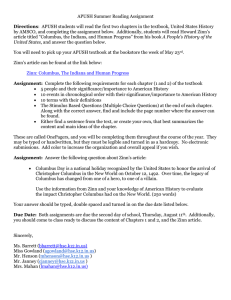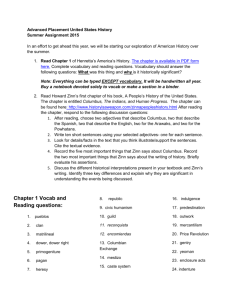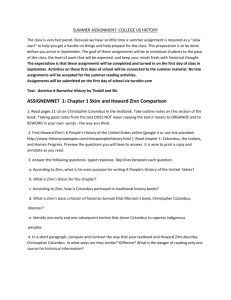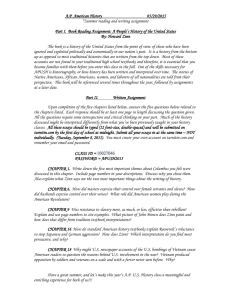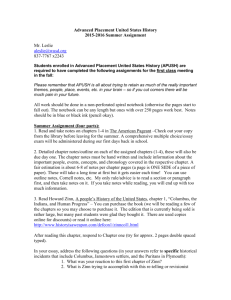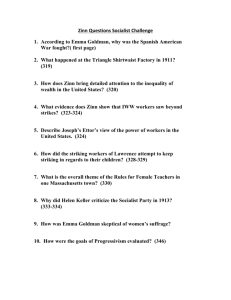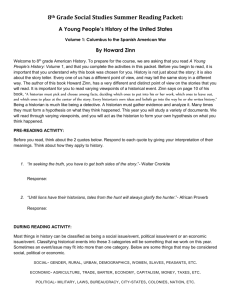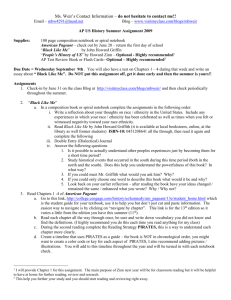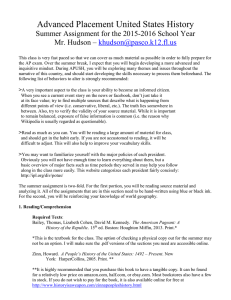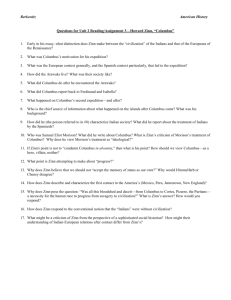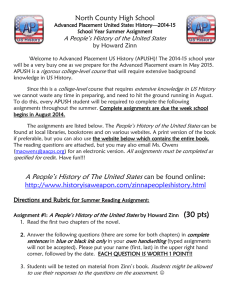AP US History
advertisement
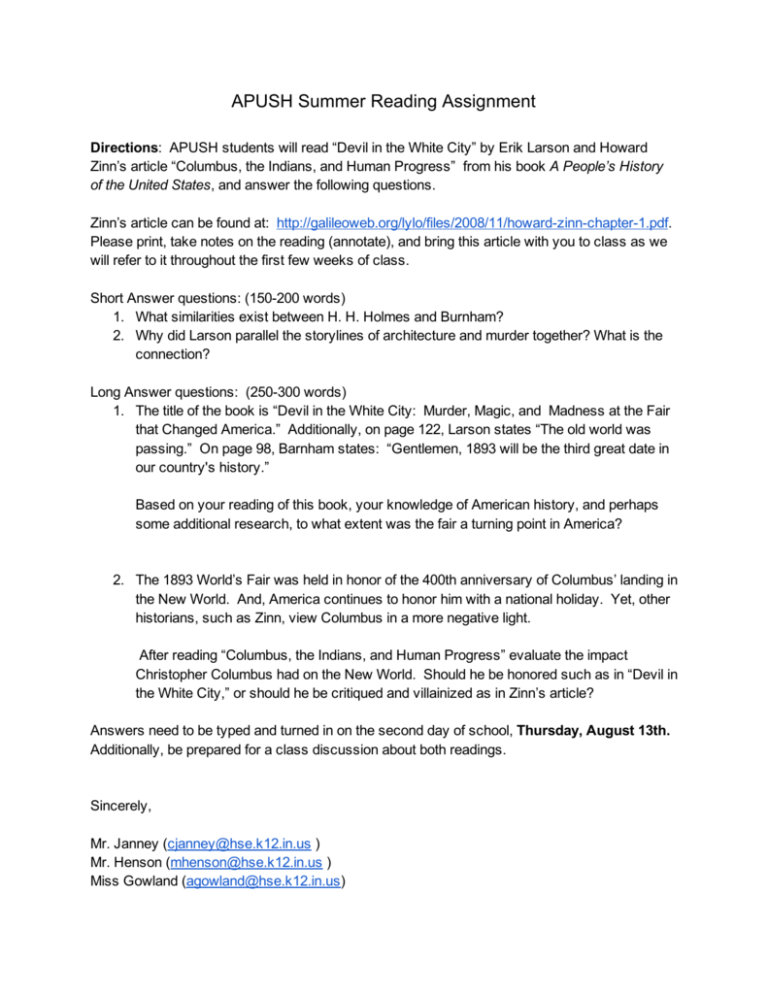
APUSH Summer Reading Assignment Directions : APUSH students will read “Devil in the White City” by Erik Larson and Howard Zinn’s article “Columbus, the Indians, and Human Progress” from his book A People’s History of the United States , and answer the following questions. Zinn’s article can be found at: http://galileoweb.org/lylo/files/2008/11/howard­zinn­chapter­1.pdf . Please print, take notes on the reading (annotate), and bring this article with you to class as we will refer to it throughout the first few weeks of class. Short Answer questions: (150­200 words) 1. What similarities exist between H. H. Holmes and Burnham? 2. Why did Larson parallel the storylines of architecture and murder together? What is the connection? Long Answer questions: (250­300 words) 1. The title of the book is “Devil in the White City: Murder, Magic, and Madness at the Fair that Changed America.” Additionally, on page 122, Larson states “The old world was passing.” On page 98, Barnham states: “Gentlemen, 1893 will be the third great date in our country's history.” Based on your reading of this book, your knowledge of American history, and perhaps some additional research, to what extent was the fair a turning point in America? 2. The 1893 World’s Fair was held in honor of the 400th anniversary of Columbus’ landing in the New World. And, America continues to honor him with a national holiday. Yet, other historians, such as Zinn, view Columbus in a more negative light. After reading “Columbus, the Indians, and Human Progress” evaluate the impact Christopher Columbus had on the New World. Should he be honored such as in “Devil in the White City,” or should he be critiqued and villainized as in Zinn’s article? Answers need to be typed and turned in on the second day of school, Thursday, August 13th. Additionally, be prepared for a class discussion about both readings. Sincerely, Mr. Janney ( c janney@hse.k12.in.us ) Mr. Henson ( mhenson@hse.k12.in.us ) Miss Gowland ( agowland@hse.k12.in.us ) How to Annotate an Article 1. Circle unknown words. As you read, circle each word you come across that is unfamiliar. You may need to come back and reread the sentences before and after the word to get at the meaning of the word. 2. Mark definitions. Underline, highlight or circle sentences that provide you with a definition. It is useful to write "def" in the margin so you can locate the definition quickly. Also mark sentences that provide examples by marking an "X" next to the sentence. 3. Number lists of ideas. Writers provide support points to back up their main idea. Write a number in the margin next to each support point or lists of points that clarify the main idea. 4. Make notes to yourself in the margins. As you read, write any questions or comments that crop up in your mind in the margin next to the passage. 5. Place a check or star next to important passages. This is extremely helpful when taking a test that requires you to read a passage, because the questions that follow the reading will most likely refer back to these points. 6. Keep it simple. Remember, you are trying to connect with the reading in some way. Use the tools that work best for you
